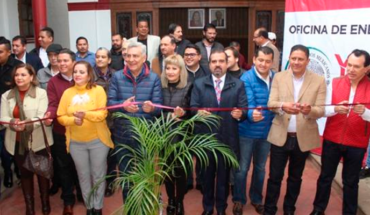Global crisis of representation processes generate at the same time, crisis of paradigms. One of the many problems, wrong in my opinion, is to identify symbols, represented by objects, with the delegitimisation of one or more paradigms.
The fire of April 15 of the Cathedral of Notre Dame in Paris is an example of what you mentioned at the beginning. From the same evening (evening in Paris) that started the fire, and soon it was learned the news, the memes viralization “celebrating” the possible destruction of the Cathedral was gigantic. What are the reasons to “rejoice” something as well?
In the first instance, or as first reading, we can put the growing crisis of legitimacy of the Catholic institution, emphasized, the last years, by the also increased allegations and many cases of sexual abuse (mostly pedophiles) develamientos , worldwide, by priests belonging to the institution.
However, the crisis of legitimacy of this type of ancient institutions already came crawling made much time before with currents from “the death of God” from philosophical, then social positions to settle, gradually, culturally. It take care of itself (in both individual) as responsibility promulgated by the existentialists emphasized the clarification news about the death of a God. But what died, in fact, was a type of reason, a very extensive time spirit in our Western history.
The rapid advance of information and communication technologies were showing occult practices by administrators of the mentioned institution. The speed of technology was on par with the speed of the multiplicity of sexual (and also economic) abuses. The height of modernity must drag the distressing existence where everything depended on ourselves; response of a non-existence could not be expected: we were alone.
The latest addition to the public exhibition of morally questionable practices by the priests, was generating increasingly less believers and children increasingly upset with one of the most powerful institutions in the world for thousands of years. Suddenly burns down one of the historical icons of this institution and the viral celebration begins. The problem with this is that it is not understood the difference between the signs (in this case of time) and the paradigmatic representation of these.
Although are not separable, if they are in terms of the knowledge as a bastion of what constitutes us as study that, like it or not (mostly to trends more radically decolonialistas), we are today. During the heyday of the library of Alexandria existed social injustices with respect showed to whom knowledge and the rest of the population, and because of that apparent ignorance by the majority of this population is that today we know a lot information, artistic creation and knowledge that burned “forever”. It is a world that we know.
Much of the history of art was also subject to the religious orders, the architecture. If we just look at retroactively those processes, we will see a dark period that we actually want to see in the present with the paradigm shift. I will give an example: nobody celebrated, while burning part of the Cathedral, the fact of frescoes, paintings and sculptures of the time invaluable could burn.
This happens because if said it that inside the Cathedral is La Gioconda in da Vinci, many people expect that this work does not reach to burn. But this latter happens only by a reckless and perpetuador social mechanism of the thoughts and ideas designed to believe that it is as valuable and as disposable in the production of subjectivity in the world. Moreover, it may be that there is not even an arrest under repair on what. It would be in this case only peat, as dangerous as physical masses peat.
While objects at a time are representative of it, in his spirit, they constitute at the same time, a sample for our observation and study of the same. It is important not to confuse the symbols of something with the mutable paradigms.
translated from Spanish: The fire in the Cathedral of Notre Dame and the confusion of the paradigm and its symbols
April 28, 2019 |





